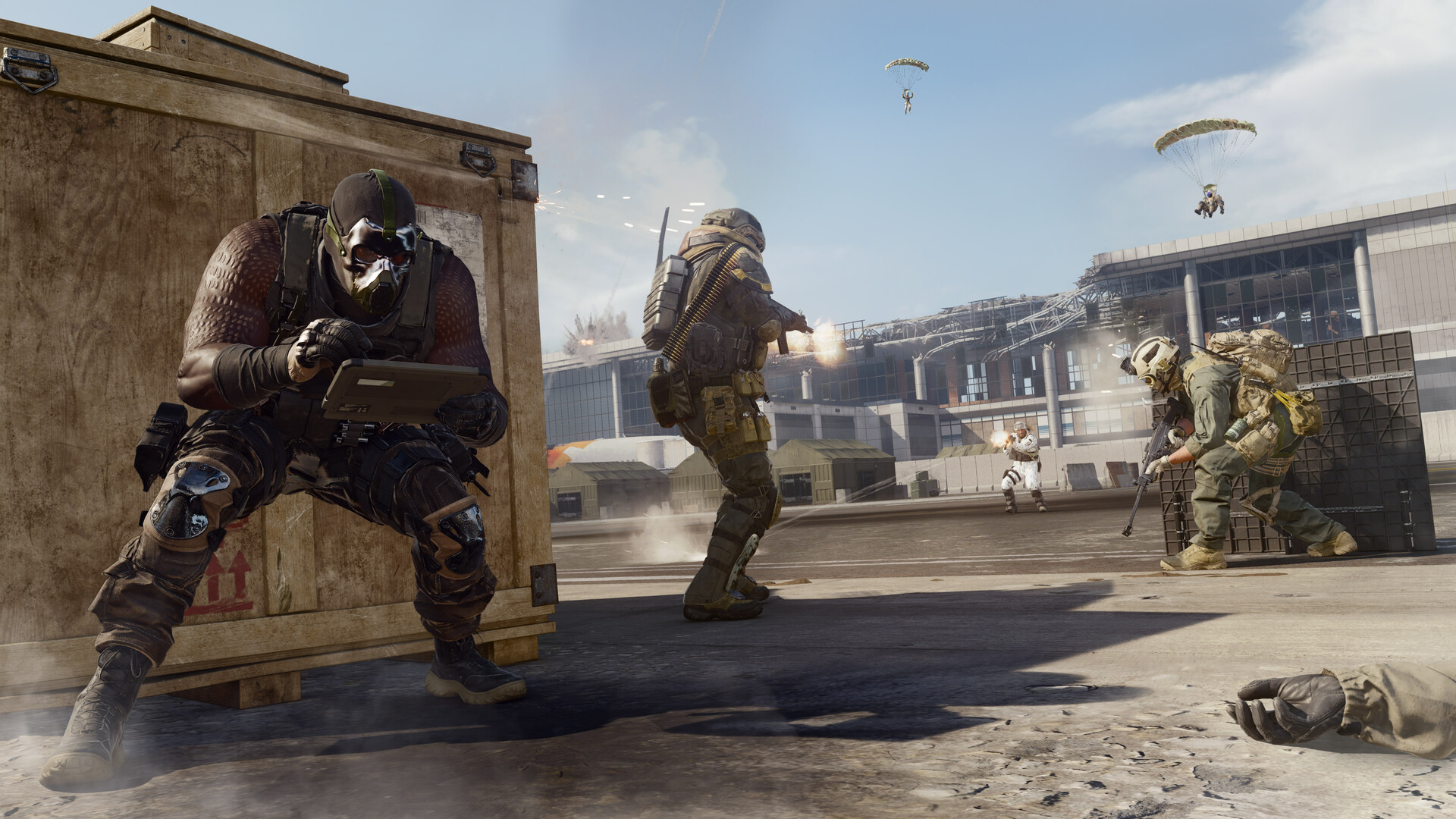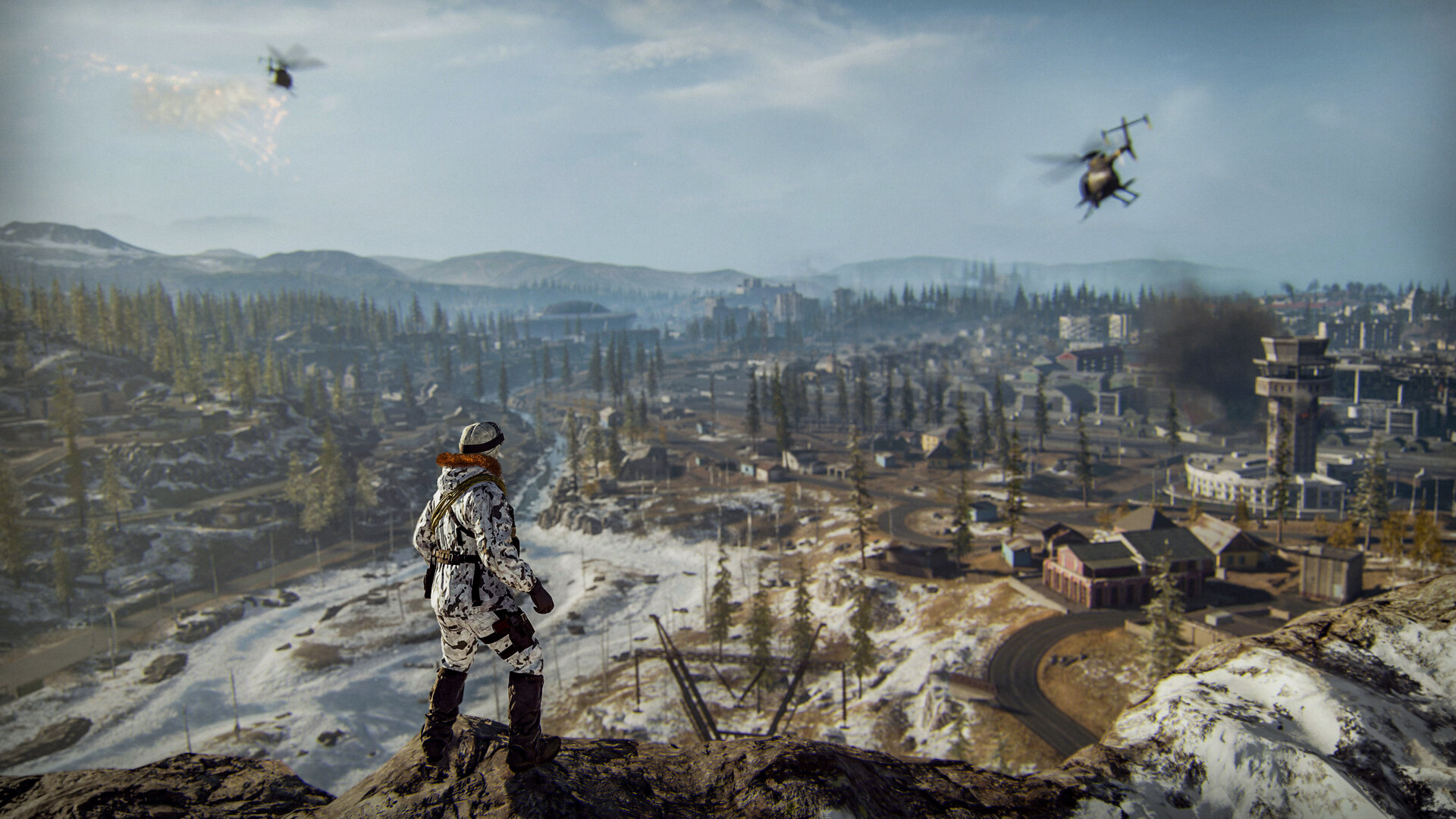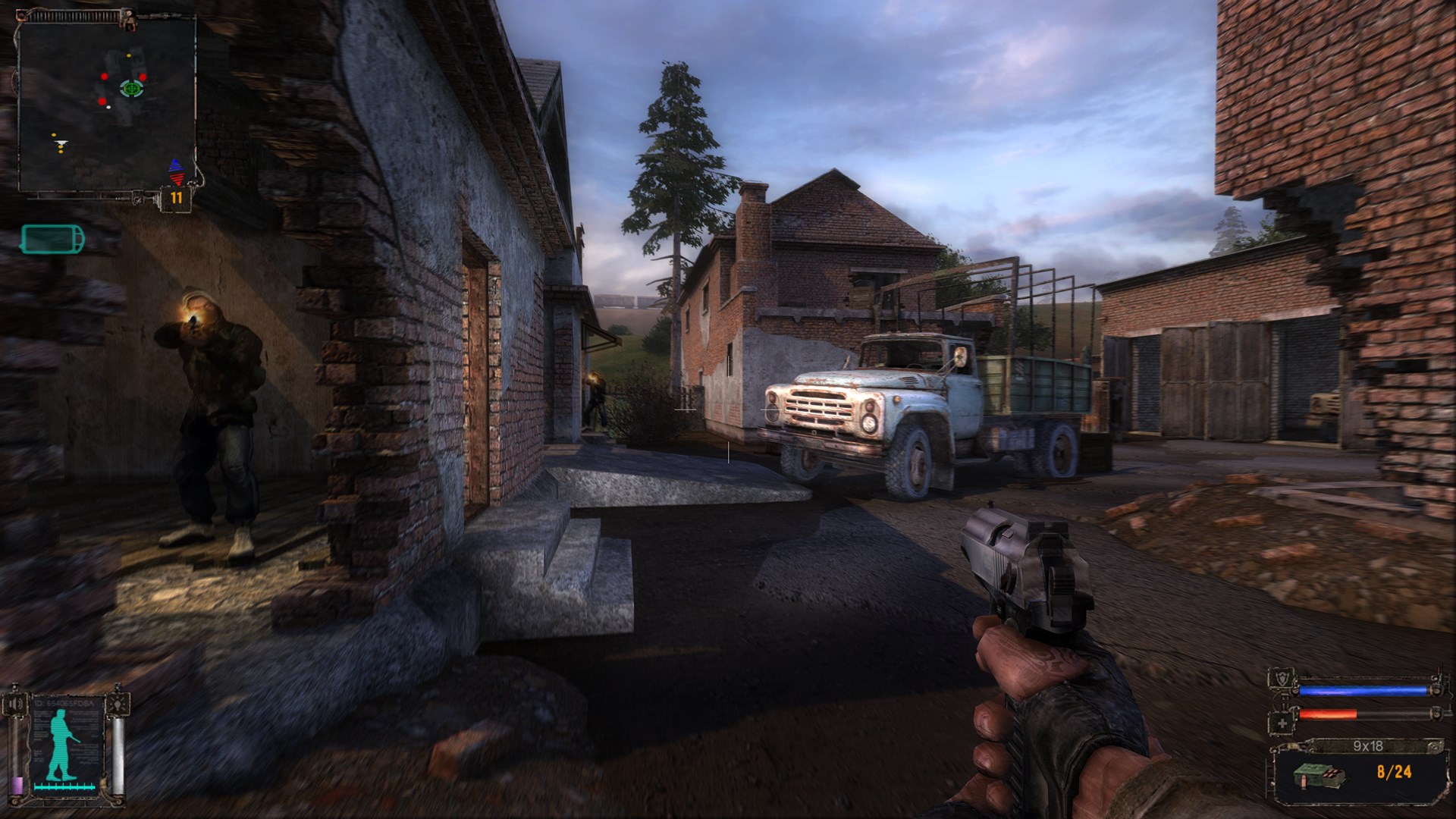As the bots take over Verdansk, Warzone and Stalker are beginning to meld in my brain
Shadow of Chernobyl is a crumbling, haunting pre-echo of COD's battle royale.

I've never met a ghost in the machine, but I remember every time an AI enemy surprised me by doing something deeply human. I know where in the church rafters I was standing when a Wolfenstein paratrooper started bunny-hopping on the spiral staircase, so that he could get a better look at me. And I'll always recall knocking a warhammer from the hands of an orc bandit on the road south of Cyrodiil. I dangled the glass weapon mockingly in front of my enemy's face—only to watch the toothy bugger pluck the hammer out of the air and start swinging again.
Stalker: Shadow of Chernobyl was designed to produce moments like these. During the Ukrainian shooter's development, GSC Game World imbued NPCs with goals and desires. These characters would set out to find artifacts in the Chernobyl Exclusion Zone, bring them to dealers, and pick up new quests. If opponents bumped into each other on the road, the game would roll to decide whether they fought to the death, traded goods, or avoided confrontation altogether. There were even plans to let NPCs uncover the mysteries of the Zone all by themselves—making the player frankly a little redundant.
By all accounts, this A-Life system was toned down by the time of Stalker's release, but even its echoes are evocative. It's the real migration of NPCs around the Zone that provides Stalker with its most iconic recurring image: a campfire surrounded by masked nomads, playing guitar and chewing whatever fat they can get their hands on.
When combat kicks off, NPCs are only more surprising. Somewhere in the mix of the last couple of decades, we've accepted that shooter enemies behave in largely predictable fashion. They rarely change cover, and often pop their heads out exactly where expected. That might make for a more comfortable experience, but Stalker reminds us what we're missing. It's electric to turn a concrete corner with a shotgun and find your rival isn't where you thought they would be. In Shadow of Chernobyl, enemies are just as likely to pounce on you as you are them, and firefights with multiple adversaries require constant vigilance to survive.
In a recent playthrough, I was struck by just how much these cat-and-mouse exchanges followed the rhythms of battle royale. For me, the quintessential Warzone experience is the game of peekaboo that occurs when one team storms another in a small house; the giddy dance of hopping out of an attic window, skipping round to the front door and blasting the hunter creeping up the stairs, their crosshairs fixed on your original hiding place. Shadow of Chernobyl simulates this exact sensation of finding and losing your targets in the heat of the skirmish. It simply does it in singleplayer.
That eerie similarity is only amplified in the arena—a grotty warehouse in Stalker's central hub, where greedy hopefuls fight to the death for the entertainment of a jeering crowd. The battleground is a cramped hedgemaze of shipping containers that could have slotted easily into Activision's rotation of gulags. Every victory I found there drew heavily on my experience of Warzone's 1v1 amphitheatre, where I learned to listen out for footsteps in order to get the crucial jump on my prey. Only, of course, there's no actual mimicry of Warzone going on here—Stalker came first. By more than a decade.
This strange and unintended association between the two games has intensified since Warzone returned to Verdansk. Infinity Ward's original pandemic-era map is stuffed full of the kind of decaying cold war iconography and architecture that continues to distinguish Stalker—even as Soviet monuments are deleted from the latter's remaster (a removal that was eventually rectified).
Keep up to date with the most important stories and the best deals, as picked by the PC Gamer team.
While Verdansk isn't based on any particular country, its towering Khrushchevka-style apartment blocks certainly suggest it once belonged to the Soviet Union. And there are other signifiers dotted throughout the map that link the place to European countries that expired in the early '90s. Any longtime Warzone player will be familiar with the striking and abstract monuments around Verdansk's exterior, which closely resemble the Spomeniks—built in the former Yugoslavia to commemorate the sacrifice of soldiers in the Second World War. Just like the Zone in Shadow of Chernobyl, this battle royale map is an unlikely graveyard for the crumbled republics and empires of the 20th century. As such, the two games share a distinct mournful atmosphere.
The return of Verdansk has ushered in a quiet but enormous shift in Warzone's status quo—one that has brought the battle royale oddly close to the dream of A-Life. If you've logged in lately, you'll have noticed that the default mode is now Casual—a more easy-going spin on the Warzone formula that matches a handful of player squads with a whole planeload of bots. In my experience, and that of my friends, it's now much harder to find a traditional game with dozens of other human beings.
Whether or not that change has improved Warzone is very much up for debate. But it has introduced a hefty and fascinating dose of NPC interplay to the battle royale. Like the stalkers of A-Life, these bots doggedly pursue their own goals. They hunt for better guns and flee from the encroaching gas. They don't particularly care whether or not they meet a real player; their aim is not to entertain you, but to achieve the same victory you're chasing at the centre of the circle.
Sure, they're clumsy, can't shoot for shit and would never last in the arena against a single NPC from Stalker. But in an accidental and roundabout fashion, Warzone is on its way to fulfilling the promise GSC first made with A-Life in the noughties. Chernobyl's shadow has never loomed larger.
Jeremy Peel is an award-nominated freelance journalist who has been writing and editing for PC Gamer over the past several years. His greatest success during that period was a pandemic article called "Every type of Fall Guy, classified", which kept the lights on at PCG for at least a week. He’s rested on his laurels ever since, indulging his love for ultra-deep, story-driven simulations by submitting monthly interviews with the designers behind Fallout, Dishonored and Deus Ex. He's also written columns on the likes of Jalopy, the ramshackle car game. You can find him on Patreon as The Peel Perspective.
You must confirm your public display name before commenting
Please logout and then login again, you will then be prompted to enter your display name.




